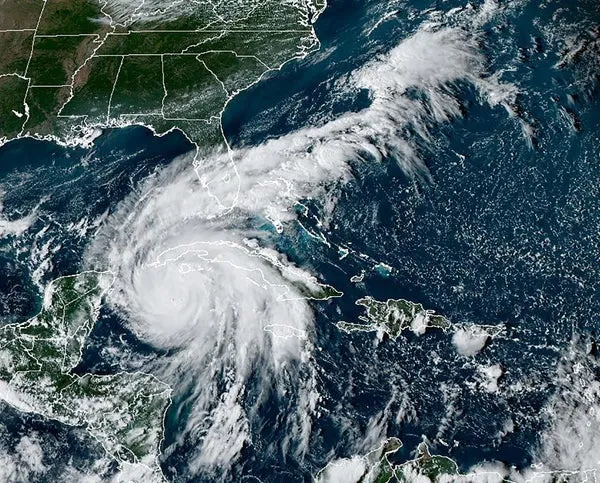Chelle Walton’s story is a testament to the unpredictability of hurricanes. As Hurricane Ian made landfall, Walton, 68, found herself waist-deep in water, scrambling to grab essential items like her husband’s medication. Despite repeated evacuation notices, she had decided to shelter in place, a decision she now regrets. With 149 deaths across Florida and over 2 million without power, Walton’s experience serves as a reminder of the devastating impact of rapid intensification.
Hurricane Ian was just one of the many storms to demonstrate this phenomenon, which scientists say is becoming more frequent due to climate change. The rapid intensification of storms poses a unique challenge for evacuation and emergency management systems, as it can lead to a category 1 storm turning into a category 5 in a matter of hours.
Phil Klotzbach, a researcher at Colorado State University, explained that storms are intensifying at a faster rate than they did in the past. “If you’re expecting a category 1 hurricane, and you get a category 5, that has a very different set of impacts in terms of the winds but also the storm surge,” he said.
Alex DesRosiers, another researcher at Colorado State University, emphasized the importance of accurately predicting when storms will rapidly intensify. “It’s one of the most important challenges facing our field right now,” he said.
Rapid intensification is not limited to storms in the Atlantic Ocean. Iris Bergeron, who worked in shelters after Hurricane Ida, recalled the fierce winds and difficulty in communicating the dangers of the storm to community members.
The legacy of redlining, discriminatory housing policies from the 1930s, still affects communities of color today. Historically disadvantaged areas continue to face disproportionate risks and challenges in the aftermath of extreme weather events.

Experts agree that communication is key in preparing for rapidly intensified storms. The National Hurricane Center issues hurricane and storm surge warnings, but the challenge lies in accurately conveying the risks and timelines to affected communities.
“We’ve gotten substantially better at predicting these rapid intensifiers,” said the NHC deputy director Jamie Rhome. “The challenge we now face is that so many people infer their risk of a hurricane based off what it is now, not what it will be in the future.”
As ocean temperatures continue to rise, the frequency and severity of rapid intensification events are expected to increase. Communities can prepare by adopting protective evacuations, personalizing risk, and engaging in comprehensive planning processes that account for the most vulnerable populations.
“Increased greenhouse gas emissions have warmed the planet but they’ve also warmed our oceans, and those warm ocean waters fuel the storms,” said climate scientist Andra Garner. “Across the board, we are seeing storms strengthening more quickly,” Garner added.
Effective emergency planning and preparedness are essential in the face of these unpredictable storms. As Walton said, “We will never stay again.” It’s crucial that communities take proactive measures to mitigate the devastating impacts of rapid intensification.

